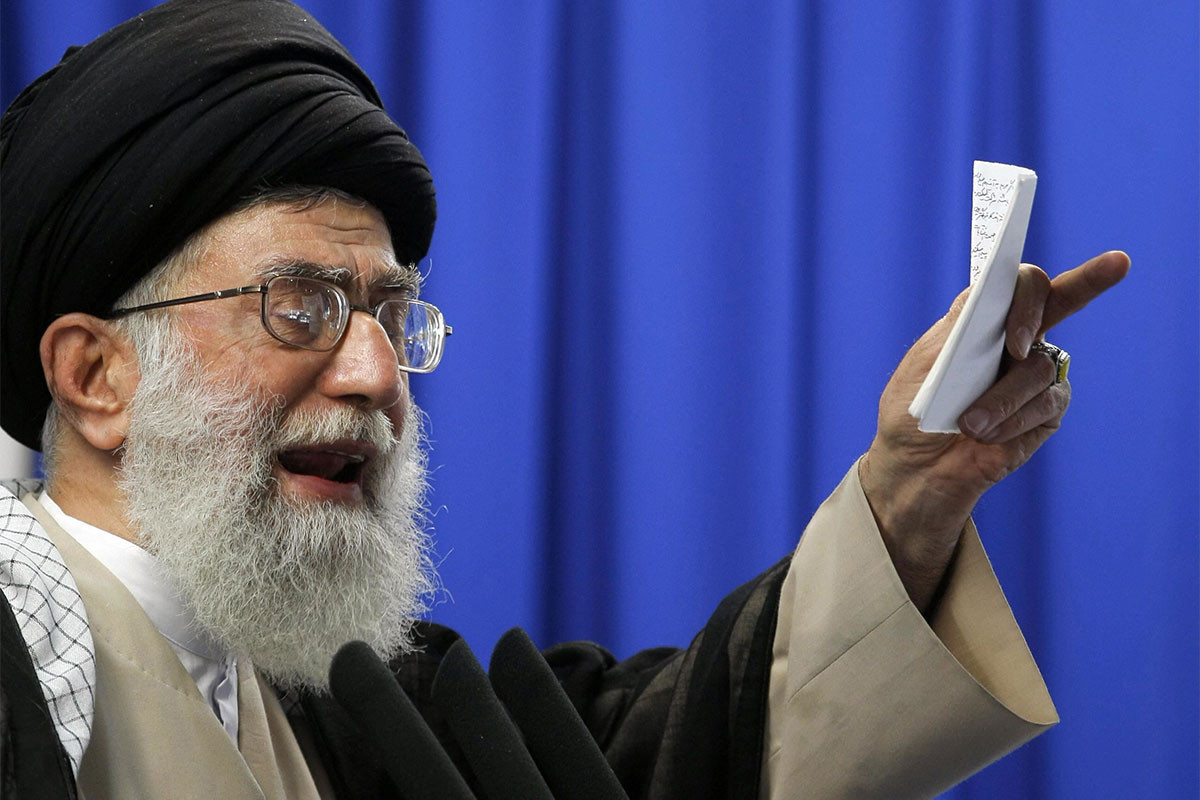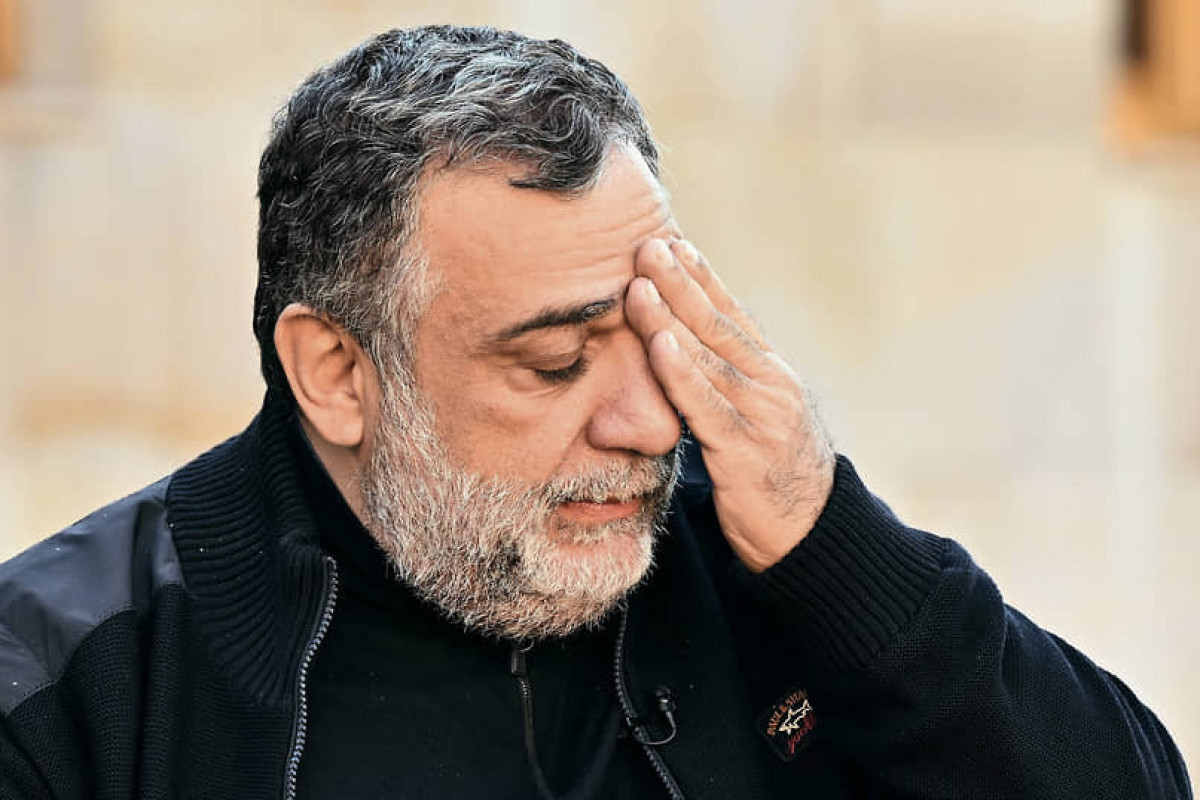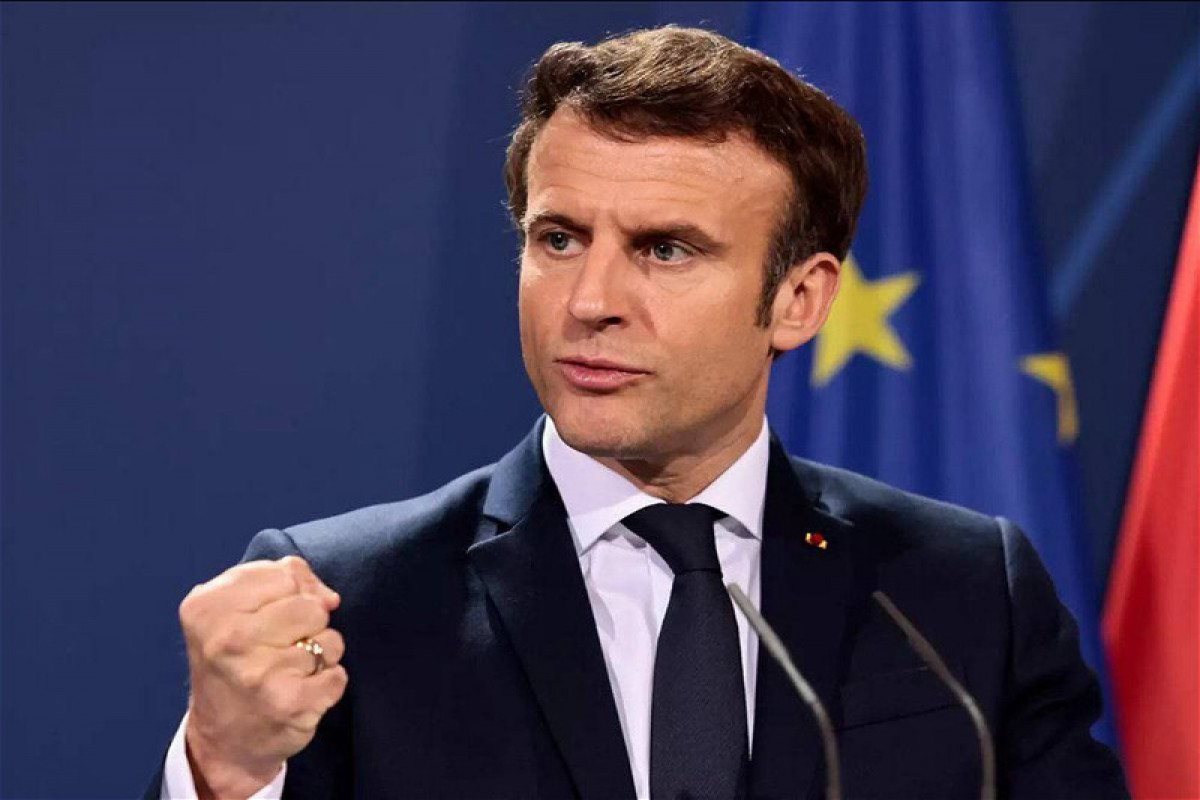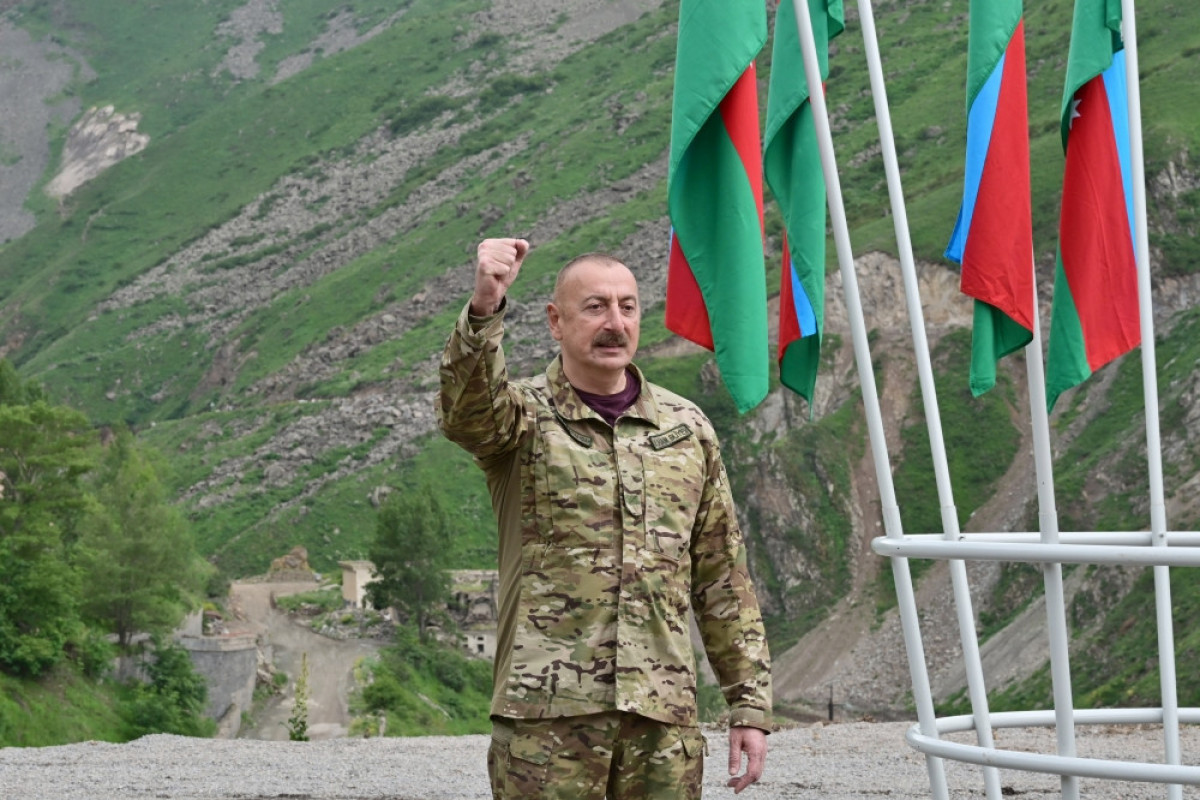The person who usurped power - Ali Khamenei
Iran's Islamic Revolution that occurred in February 1979 brought a new unique state structure to the world. On the one hand, the Islamic Republic of Iran had republican traditions characteristic of secular states, and on the other, a theocratic state structure dominated by Shia spirituality. Thus, though the constitution establishes the division of power in the country, the power over all branches of government belongs to the supreme leader chosen by a small number of senior Shiite clerics.
The supreme leader is considered the country’s both supreme leader and political leader, as well as an authority without associate. Since 1989, the supreme leader of Iran is Khamenei. He concentrates all religious and secular power in his hands and controls all executive, legislative, and judicial systems, including the Presidential, Parliament, and judicial systems.
This mullah regime, founded by religious figures based on Islamic-Shia Sharia, started to deal with the export of the Islamic Revolution to neighboring countries from the first day of its establishment. In this context, Iran can be compared with the Soviet Union, established during the coup in 1917. If the USSR tried to spread socialism to the neighboring states, Mongolia, China, North Korea, Eastern Europe, and Afghanistan and tried to forcefully establish it, in the same way, Iran has taken the path of introducing its distorted Islamic state model to the neighboring countries.
Iran actively carries out its policy, especially in countries where part of the population belongs to the Shia sect.
The interesting is that another characteristic connecting the USSR and Iran is that external sponsors played an important role in their establishment.
France-Iran-Armenia triangle
It is known from history that during the First World War, the German Empire (Second Reich) supported the Bolsheviks, led by Vladimir Lenin, and transferred money and intelligence to overthrow the Russian Empire, which fought against it in the Entente Union. Even in April of 1917, to return to Russia, where the tsar was overthrown, Lenin who was living as an immigrant in Switzerland, passed through the territory of Germany unimpeded by an armored train.
At this point, the return of Lenin, the founder of the USSR, to Russia can be compared with the return of Ruhollah Khomeini, the founder of the Islamic Republic of Iran, from France to Iran, on February 1, 1979.
Khomeini, who was exiled from Iran in 1964, for opposing Shah’s rule, managed to live in exile and return on the verge of regime change, like his Bolshevik counterpart.
The similarity between them can be seen in the fact that after the change of power and the creation of the new structure, both people organized repression and intolerance against their political opponents, and spread their ideology to the surrounding countries.
At this point the return of the founder of the USSR Lenin to Russia can be compared with the return of the founder of the Islamic Republic of Iran Ruhulla Khamenei to Iran from France on February 1, 1979.
Khomeini, who was exiled from Iran in 1964 for opposing Shah's rule, managed to live in exile like his Bolshevik counterpart Lenin and returned on the verge of regime change. The similarity between them can be seen in the fact that after the change of power and the creation of a new structure, both people organized repression and intolerance against their political opponents, and spread their ideologies to the surrounding countries. Just as Joseph Stalin continued Lenin's course more sharply and mercilessly, his successor Ali Khamenei continues Ruhullah Khomeini's political course with the same energy and ruthlessness.
In this context, as the sponsor of the Bolshevik revolution was Germany, it can be said that France supported the Islamic revolution. It can be seen in the fact that Paris gave political asylum to Ruhulla Khamenei, and the sides did not suspend diplomatic relations after the revolution. That’s right, although France’s support for Baghdad in the Iran-Iraq war led to serious coldness between the two sides, since the 1990s the cooperation between Tehran and Paris has been developing in ascending line.
It is enough to mention only one fact regarding this cooperation during Iranian President Hasan Rouhani’s visit to Paris in 2016, a trade agreement worth 15 bln. Euro was signed between the sides.
Along with economic interests, power structures of two countries, that sharply differs in the first sight, are very close in political aspect. This affinity manifests itself most prominently in the South Caucasus region - sensitivity to Armenia and extreme prejudice against Azerbaijan.
Both countries were distinguished by their sharp stance against Azerbaijan in the 44-day war.French President issues absurd statements about Azerbaijan using ISIS fighters in Karabakh, tried to hinder our army from liberating its territories from occupation according to international law, and provided diplomatic support to Yerevan.
Iran, calling Azerbaijan a fraternal country was not only satisfied with turning a blind eye to the destruction and defilement of Muslim-Shia mosques in Karabakh by Armenians for 30 years but also provided both economic and military support to the official Yerevan.
This hypocrisy of the Mullah regime was shown during the 44-day war when our army obstructed the liberation of the Khudafarin water power station from occupation, and when Armenia released the weapons sent by Russia during the war from its territory against the background of the closure of Georgia's airspace.
And after all this prejudice, and war, the source of military training with threatening message held on the border with Azerbaijan, statements defending Armenia is supreme leader of Iran, Ali Khamenei.

A lover of orgy, Khamnei
If we pay attention to his personality, we can see that Ali Khamenei is completely away from religion, being a lover of orgy.
Thus, the first move of Ali Khamenei, elected supreme leader in 1989, was to move into a 1200 square meter mansion. It is said that he has a bunker with a depth of 60 meters and an area of 5,000 square meters, which can withstand even a nuclear attack. In general, it is known that this "religious devotee" has 6 mansions in different regions of the country.
The supreme leader's wealth includes 17 cars worth $400,000 each, 2 Boeing planes, 5 Falcon planes, 5 helicopters, etc. there is
The well-known Iranian director, and author of the article "Secret Life of Khamenei", director Mohsen Mahmalbaf claims that the religious leader has a fortune of 36 billion dollars.
Reuters agency reported that Ali Khamenei is the owner of the Setad company, which covers large plots of land and properties left over from the Shah era. In addition, note that the supreme leader has a drove of horses with a total value of 40 million dollars.
And all the wealth belongs to the religious leader who considers himself a symbol of simplicity and humility and represents the faith of tens of millions of people.

The task of Ali Khamenei, executive SEPAH
Ali Khamenei and his direct subordinate, the Islamic Revolution Guards Corps (SEPAH), often resort to such manipulations for their own political purposes. In this context, let's take a brief look at the foreign policy of Iran and its wealth-loving leader, including the attitude towards Azerbaijan.
Today the destructive role of Iran is clearly seen in the internal policy of the countries which have great Shia communities, such as Iraq, Lebanon, Afghanistan, Syria, Palestine, and Yemen.
Official Tehran, which created the armed organizations and armed groups "Hezbollah" in Lebanon, "Asayib Ahl al-Haq", Imam Ali Brigade, "Al-Abbas Brigade" in Iraq and Syria, and "Al-Nasr" in Afghanistan, is trying to influence the authorities of those countries through these forces. is thinking of disrupting its political stability and eventually transferring the structure in those countries to a religious structure controlled by self-dependent puppet regimes.
Iran, which finances the organization "Harakat al-Sabir Nasran li-Palestine" created by the Khazarians in Afghanistan, the Houthis in Yemen, and the small Shiite minority in Palestine, creates conflicts in those countries and behaves according to the principle of "divide and rule".
The next target was Azerbaijan, which was independent after the collapse of the Soviet Union. Iran has chosen Azerbaijan as a target for exporting the Islamic model, which borders it, has historically been part of the same state for centuries, and the majority of its population is Shia Muslims. Of course, the author of this idea was directly Khamenei.
For this purpose, Iran, which used "soft power" at first, used false promises through its agents and clerics in its sphere of influence to target a certain mass of people in Azerbaijan who were "brainwashed", young people whom it can easily manipulate, some members of the socially sensitive group, and religious fanatics. began to prepare as a veil of religious solidarity, and in some cases as a "fifth column" in exchange for money and blackmail. At the same time, it is important to note that the young people who were taken from Azerbaijan to Iran, especially to the Qom basin, in the name of religious education, were specially trained against their country.
As the years passed, new technologies emerged, and although Khamenei is old, he has resorted to using the service of new trends to achieve his dirty goals. The relevant agencies of Iran, implementing his instructions, confused the society of Azerbaijan, disruption of public order, and armed calls against the secular state structure with fake profiles, scened videos, and misinformations consuming religious sensitivity of the people on social networks such as Facebook, Instagram, etc.
But in the last 30 years, except for certain provocations, the Islamic Republic of Iran did not achieve any of its goals in Azerbaijan. Although the majority of the population is Shiite, the citizens of the country did not believe in the deceptive promises of the Iranian ayatollahs who presented themselves as the center of Shiism. The citizens of Azerbaijan as a society did not unanimously accept the model of the Islamic state presented by Iran and showed that they were loyal to secularism and the constitutional structure.
In this case, the Iranian authorities began to choose the path of repression and violence under the instructions of Ayatollah Ali Khamenei.
On January 27, 2023, there was an armed attack on the Azerbaijani embassy in Tehran. As a result of the attack the head of the security service of the diplomatic mission Orkhan Asgarov died, while two security guards were injured. Although the Iranian side claimed that the incident was on a family-household basis, the inaction of security police in reality, etc. the facts leave no room for doubt that the terrorist act was committed by the supreme political leadership of Iran, under the direct instructions of Khamenei.
Ali Khamenei, who sent a message to Azerbaijan with this crime, gives further orders to the Islamic Revolution Guards Corps - SEPAH, which is considered his personal army.
The last wave of these criminal acts is the assassination of Azerbaijan Parliament member Fazil Mustafa, which was organized in front of his house on the evening of March 28.
Fortunately, the life of the deputy who escaped with 2 gunshot wounds is not in danger. But the incident is aimed at Iranian leaderhip deployed SEPAH agents inside Azerbaijan, planned political murders that would disrupt political stability in the country, and forcefully introduced his Islamic model to Azerbaijan, nullifying the strategic advantage that Azerbaijan gained in relations with Armenia after the 44-day war.
_1680273477.jpeg)
Khamenei is the absolute ruler of Iran. He made all decisions on behalf of the country. Therefore, he is at the head of every step taken by Iran regarding Azerbaijan, and all the responsibility is on him.
Khamenei shows by his actions that he represents Islam only in name, is completely far from religious rules, humanism and religious solidarity, and uses religion only as an attractive tool for his own geopolitical interests.
Against the background of the recent protests about the hijab in Iran, the Iranian government, its leader Ali Khamenei and the SEPAH terrorist organization under his command proved their brutality by mercilessly killing more than 450 of their citizens.
The most massive and continuous protests of the last 40 years show that the mullahs' regime in Iran wobble and try to stay on its feet through terror and repression.
But just like the collapse of the shah's power in 1979, the terrorist regime in Iran is also expected to collapse in the near future.






